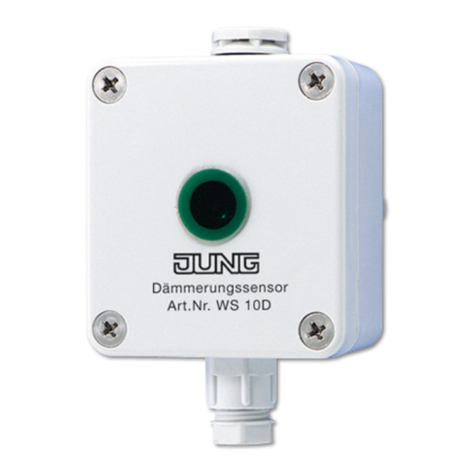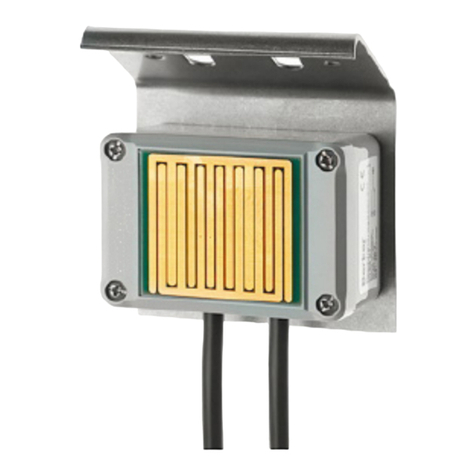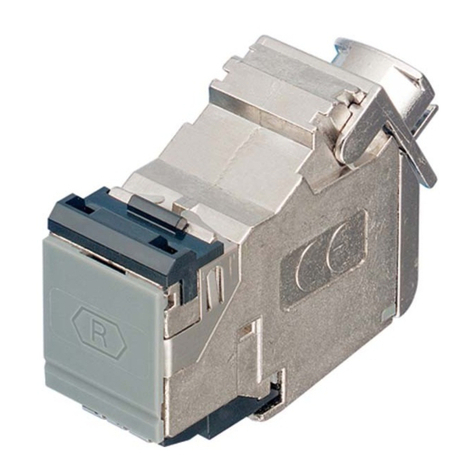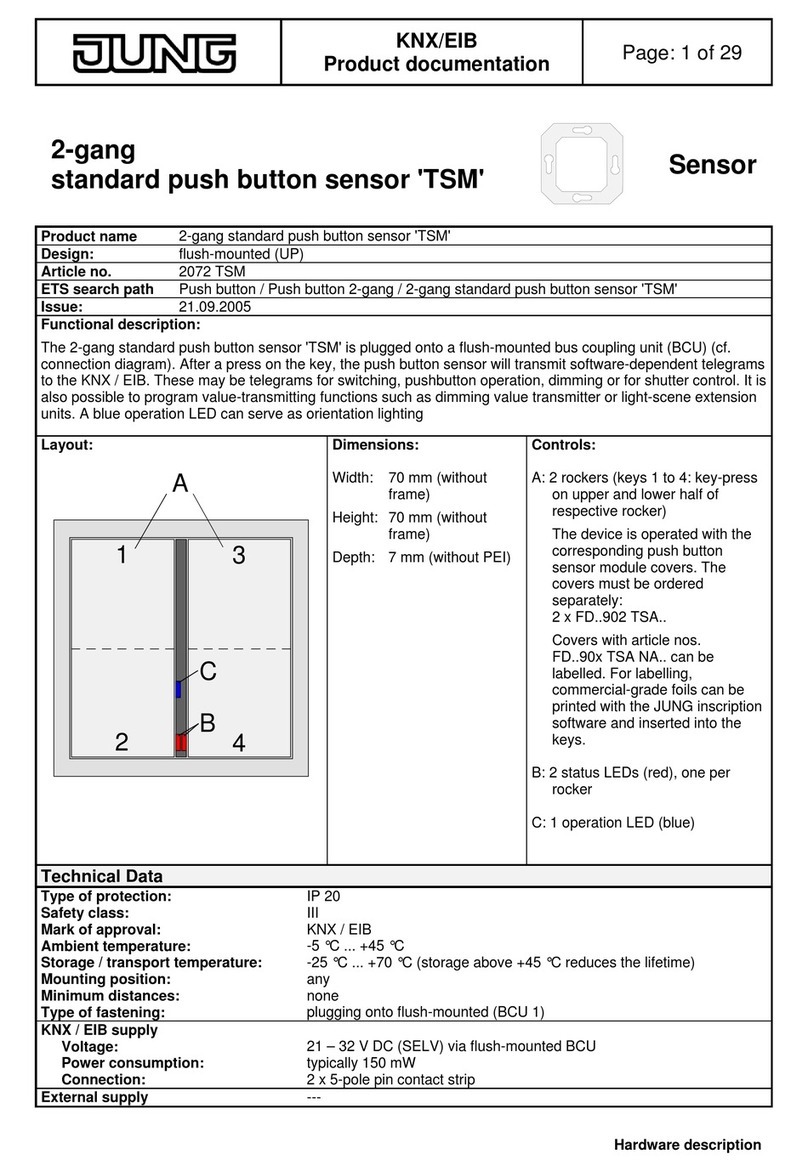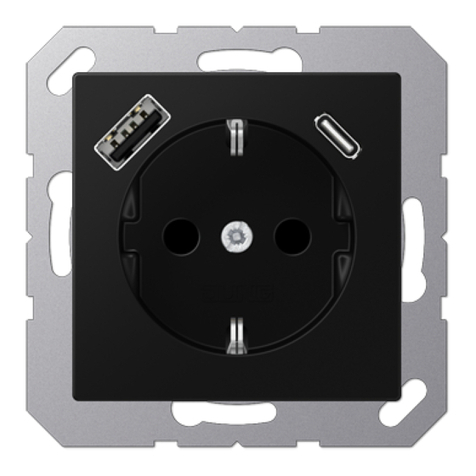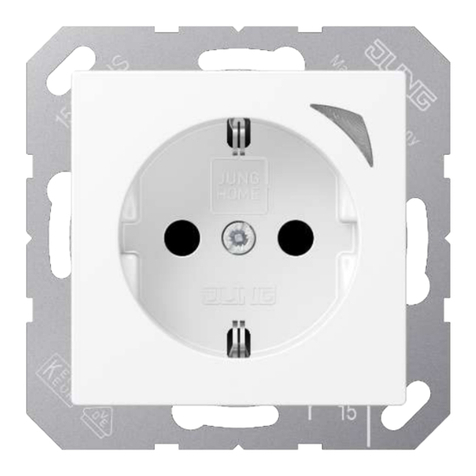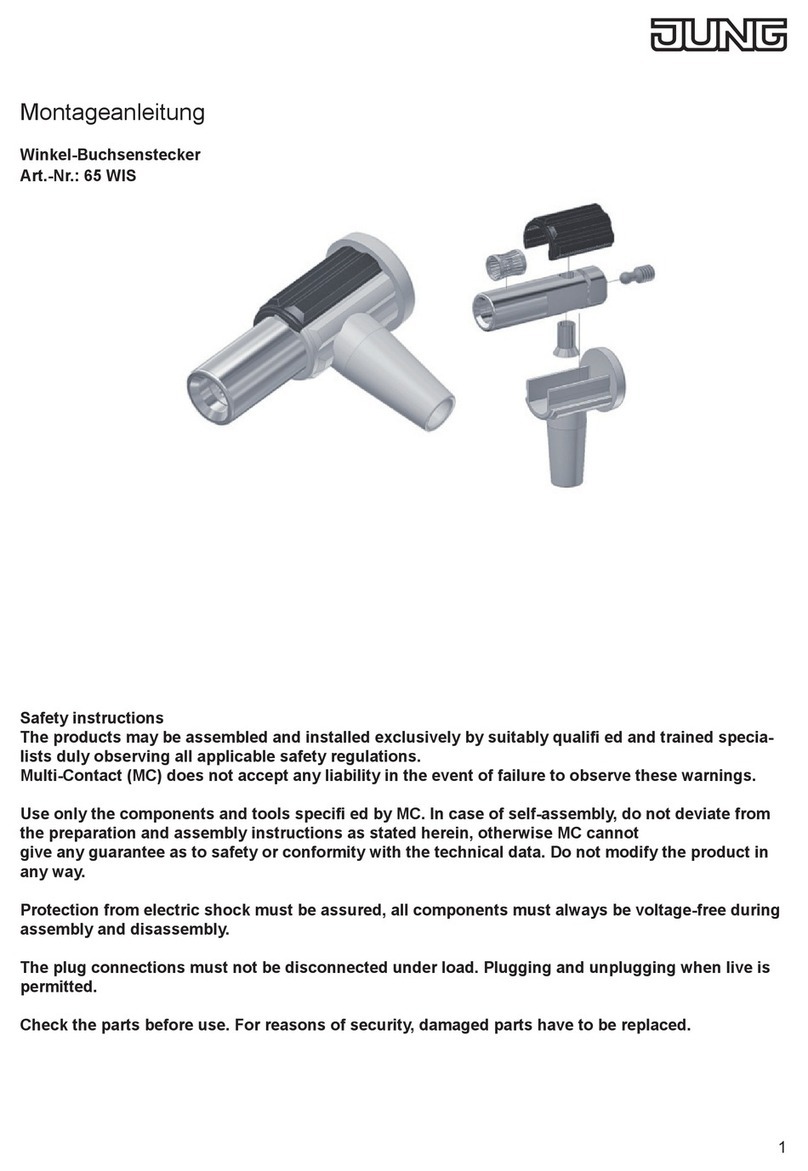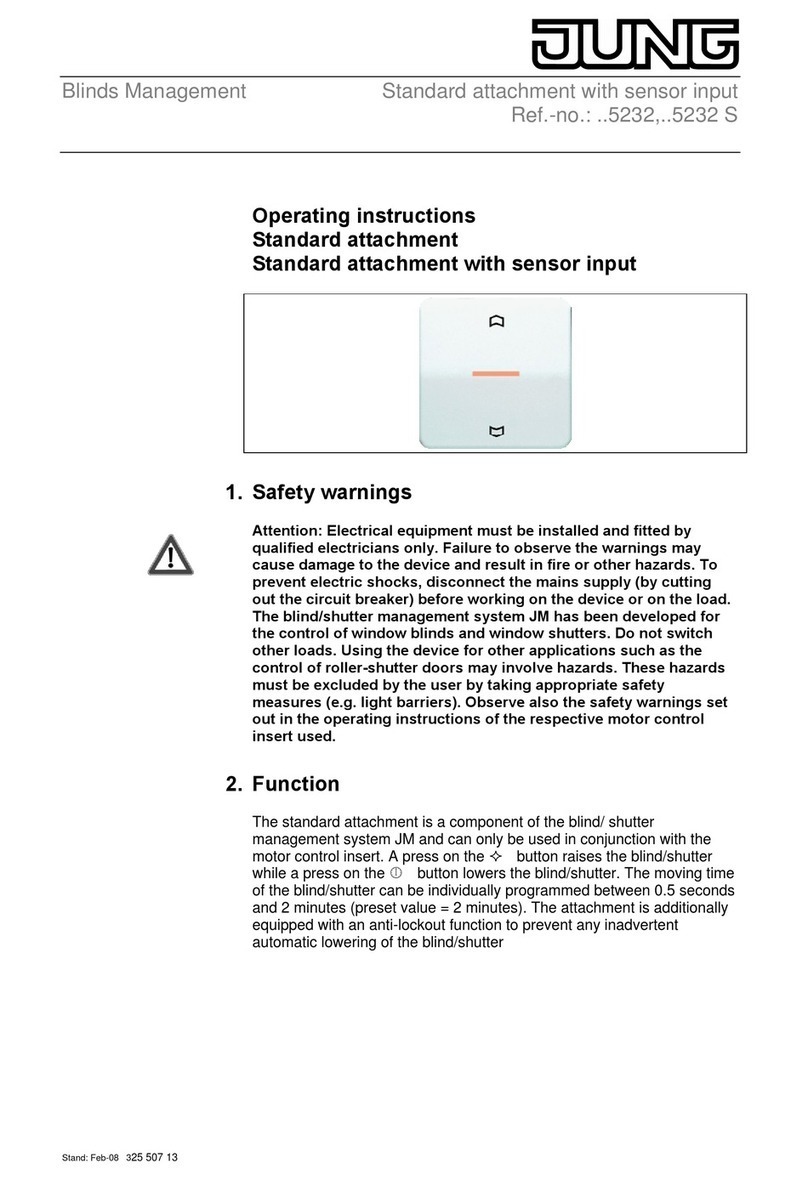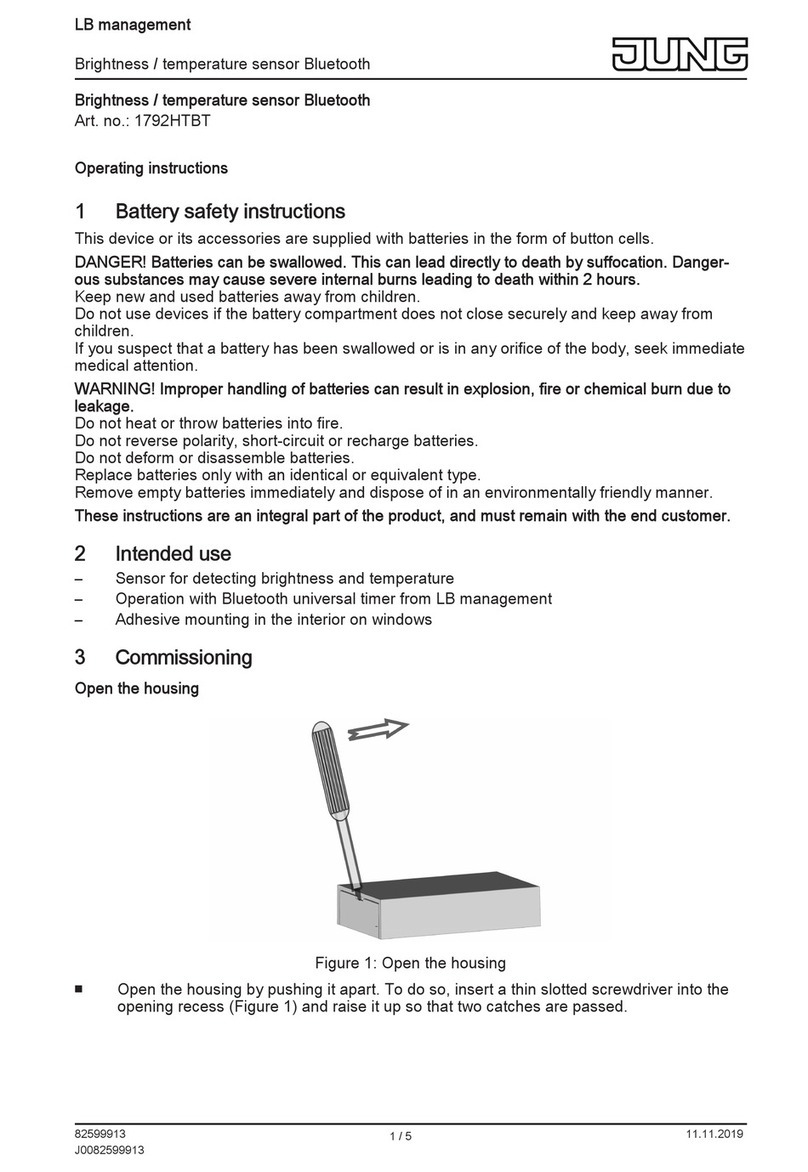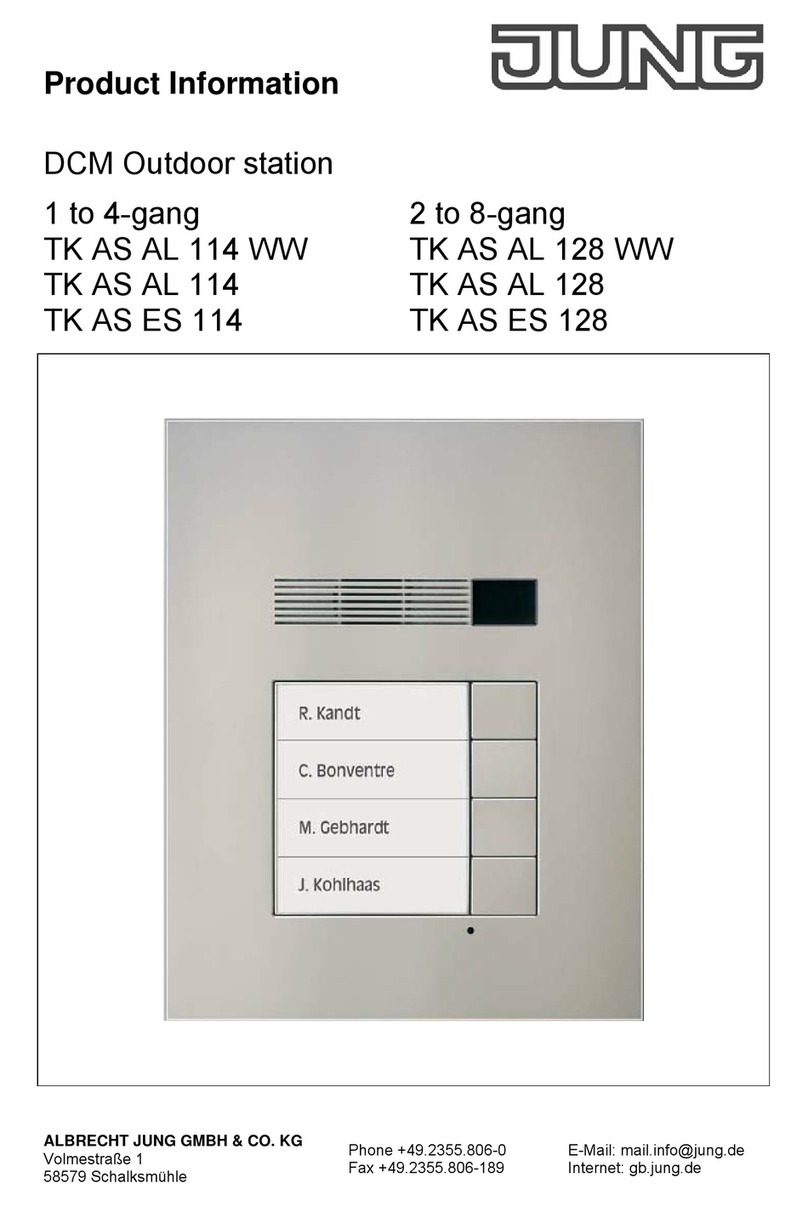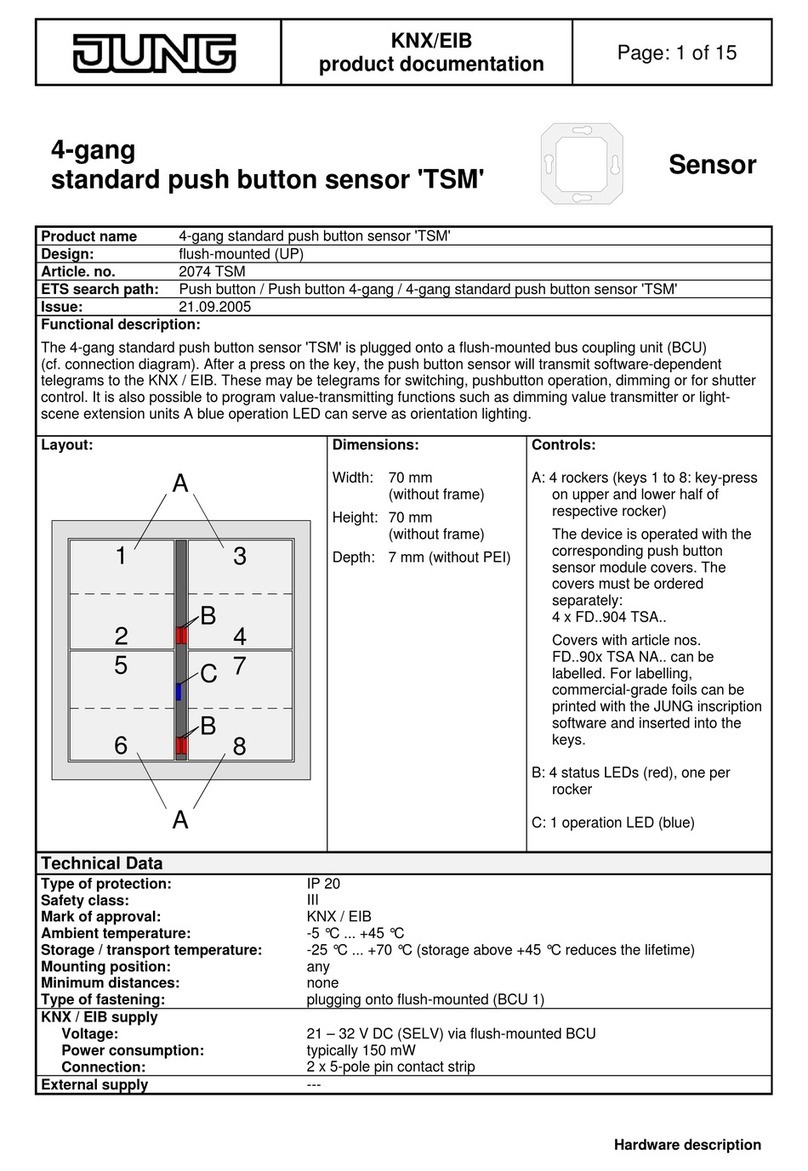
Art. No. BTS01
2.4 Commissioning and function
Commissioning of the dew sensor
The following specification must be set in the parameters of the evaluation unit (e.g. KNX valve
drive (motor-operated) with controller):
- Debounce time: 127 ms
Function of the dew sensor
The device monitors the electrical conductivity between the conductive coatings on the sensor
surface. If it is dampened with water, the device detects the change and signals it.
The device is electrically supplied by an evaluation unit. The signaling of an alarm takes place
by short-circuiting the supply voltage. The device supplies itself internally while it is short
circuited.
When the sensor surface is moistened, the device signals an alarm (rising edge) of the
evaluation unit. An internal clock measures the time beginning at this moment. The device of the
evaluation unit signals an alarm for the duration of 1 minute. The device signals an alarm as
long as the sensor surface is moistened. Even if the sensor surface is free from liquid within the
first minute, the device still signals an alarm for one minute. After the minute is up, the device
checks to see if the sensor surface is still moistened. As soon as the sensor surface is no longer
moistened, the device cancels the alarm signal (falling edge).
The signal is recorded by the KNX device used by the evaluation unit and transmitted to the
KNX in accordance with the project design. As a rule, the polarity of the KNX telegrams can be
set in the parameters of the KNX device. In accordance with the project design, "1" telegrams or
"0" telegrams are transmitted on the KNX if there is a rising or falling edge.
The device does not function in the event of prolonged supply voltage failure. The device
automatically resumes functioning upon the return of the supply voltage.
iThe device cannot prevent the accumulation of condensation, but still detects and registers
it early, so that the impact of the unwanted condensation can be kept minor.
iThe sensor surface can be damaged if it comes into contact with aggressive media (e.g.,
detergent solutions, scrubbing brines or acidic condensation from condensing boilers). The
sensor area is to be checked after every alarm. The device is to be exchanged in the event
of significant damage from corrosion.
Page 9 of 17
Mounting, electrical connection and operation
